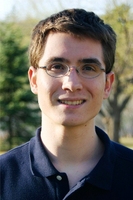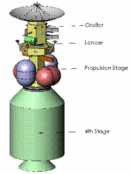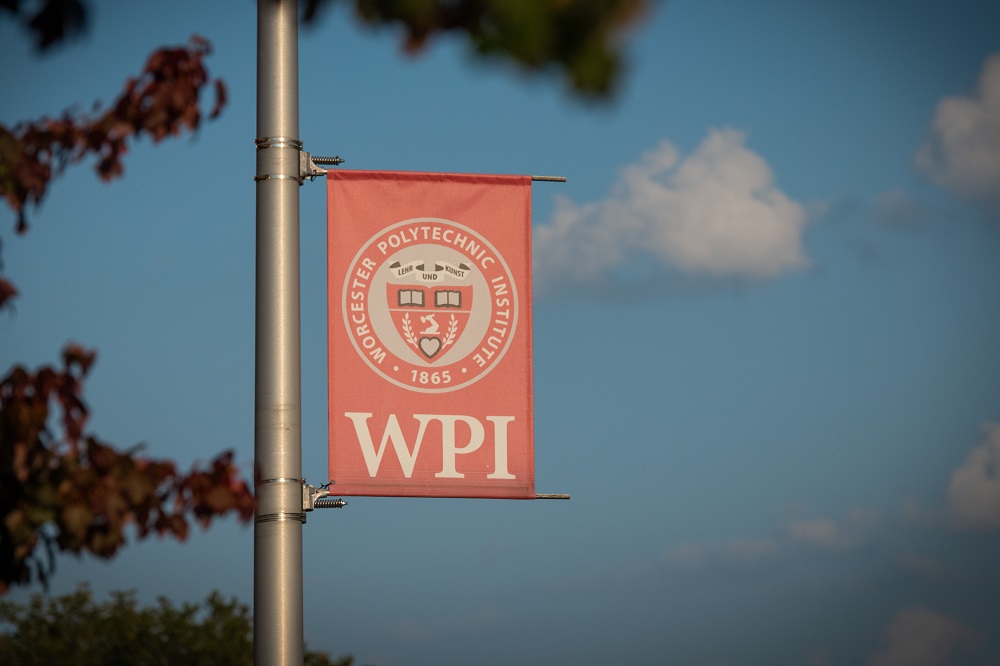
WORCESTER, Mass. -- Worcester Polytechnic Institute (WPI) junior McConnell "Conn" Dickson has put the saying "reach for the stars" to good use.
Dickson, 20, is an aerospace engineering and physics major, and one of the few WPI students to have won placement at the National Aeronautics and Space Administration’s (NASA) most competitive internship program, the flagship 10-week 2006 NASA Academy at Goddard Space Flight Center (GSFC), in Greenbelt, Md. The academy is an intensive resident summer program for a diverse group of college undergraduate and graduate students interested in pursuing professional careers in space-related fields.
The NASA Academy program gives participants an overview of NASA, including some of its most important current and planned science, engineering, education, and technology programs. Students attend lectures and workshops, take part in supervised research in GSFC laboratories, and visit NASA headquarters and other NASA facilities, and space-related academic laboratories and industries. Dickson’s group met with Peter Diamandis, founder and executive director of X-Prize Foundation, co-founder of International Space University, and co-founder and executive director of Zero-G Corp.
Each student at NASA Academy conducts an individual research project, and participates in group research. Dickson’s individual project, titled "MEMS Colloidal Thruster," focused on micro-propulsion, which has become a needed technology to assist micro-satellites that weigh between 1kg and 60kg, roughly 2 to 132 pounds, and to guide satellite formations. His group research project resulted in a proposal for a satellite mission to Saturn’s moon, Enceladus, to look for evidence of water. Dickson was on the mission’s structural design team.
Dickson represented WPI at the 38th annual meeting of the Division for Planetary Sciences of the American Astronomical Society at Cal Tech in Pasadena, Calif., in October 2006, the culminating event for NASA Academy resident interns. At the meeting, he and his NASA Academy peers participated in a focus group on Enceladus.
Dickson, a native of Columbia, Md., attended River Hill High School. He became interested in aeronautics when he took his first plane ride at age 3 in a "puddle jumper" from Maryland to Pittsburgh to visit his grandparents. "I admit," he says with a smile, "I’m still addicted to the window seat."
While still in high school, he interned at NASA Academy at Goddard from September to December 2003. "With the opportunity in high school to intern at NASA Goddard, as well as being a part of a pre-engineering tech magnet program, I knew ‘discovery followed by application’ was my vocation. Now at WPI, research and team project-based learning reinforce my commitment to understanding the mysteries of space."
In future research projects, Dickson hopes to explore new frontiers in propulsions, particularly new heavy-lift launch vehicles that can be used to haul more materials into space. "I think it’s a very interesting problem," he says.

Dickson has won many honors and scholarships. Most recently, he successfully competed for placement at WPI’s Melbourne, Australia Project Center, where he will complete a seven-week interdisciplinary project next spring. He is also co-founder and vice president of WPI’s Defense Advanced Research Projects Agency (DARPA) Grand Challenge Team, now known as Autonomous Robotics Initiative, which is 100 percent student run. He is a member of the American Institute of Aeronautics and Astronautics and the Society of Physics Students. He is also a certified concrete field testing technician (Grade I) with the American Concrete Institute. His hobbies include music, skiing, model rocketry, knitting, rock climbing, space news, the viola and banjo, unicycling, and computational fluid dynamics.
Dickson, who plans to continue his aeronautics studies in graduate school, said the opportunity to participate in NASA Academy and attend the American Astronomical Society’s conference provided "real world experiences, where one is able to have an impact on the field. It’s a privilege to have been a part of them."


